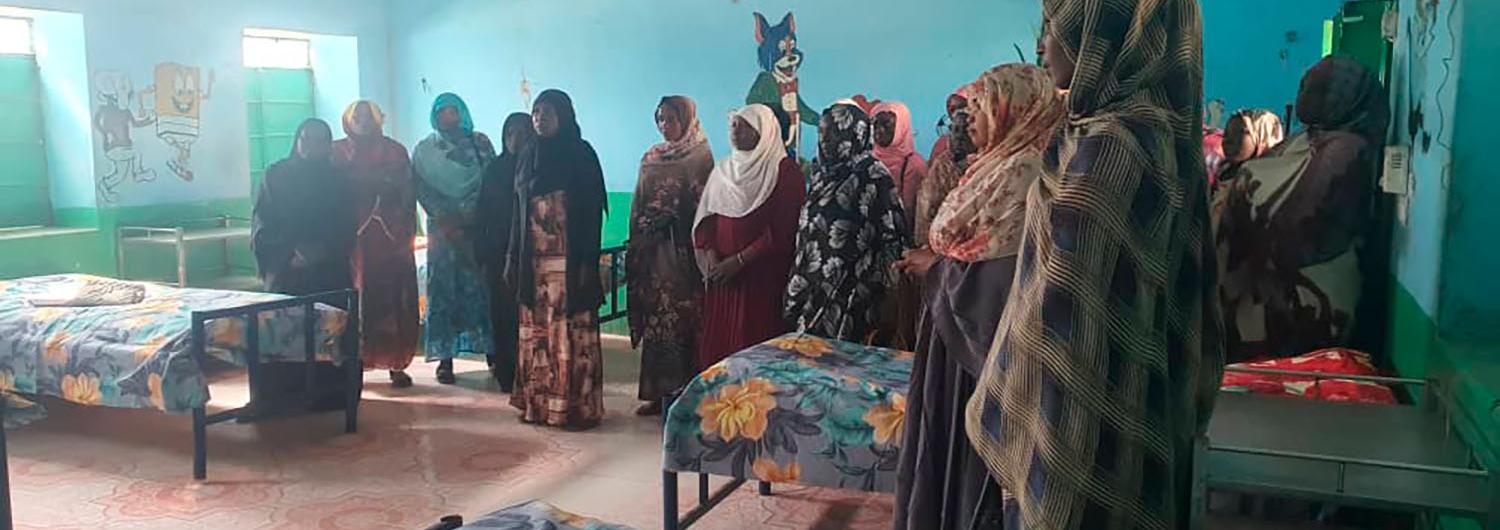News
One of our Malnutrition Treatment Centers Looted in Sudan, Now Restored
25/01/24

© Action Against Hunger
As the conflict between the SAF and the RSF continues across the country, civilian displacement and humanitarian needs continue to increase steadily. According to the Acute Food Insecurity Projection Update for October 2023 – February 2024 of the IPC, intense conflict, and organized violence, coupled with the continued economic decline, have driven approximately 17.7 million people across Sudan into high levels of acute food insecurity, classified in IPC Phase 3 or above (Crisis or worse). Of those, about 4.9 million are in IPC Phase 4 (Emergency), a step away from famine.
According to Action Against Hunger’s findings, the acute malnutrition admission trend among children under five (U5) is increasing due to the current crisis in the country, economic deterioration, and increasing Internal Displaced People’s (IDPs) needs. A considerable number of children lack access to routine vaccinations against easily preventable diseases, while nearly 700,000 children with severe acute malnutrition (SAM) are at risk of dying without treatment, according to UNICEF data of November 2023.
Attacks on health care continue to be reported across the country. Since 15 April, WHO has verified 60 attacks on health care. The conflict has significantly affected the delivery of much-needed humanitarian assistance and essential public services. In June 2023, the Malnutrition Stabilisation Center that Action Against Hunger supports in Garsila, Central Darfur, was target of one of these attacks and was looted. Action Against Hunger teams in Sudan have recently renovated it, equipped it (beds, mattresses, bed sheets, blankets, kitchen kits, water tanks, etc.) supporting health staff (3 nurses, 4 nutrition assistant, 1 medical doctor, 1 nutrition officer, one guard and one cleaner) and it is now functional again.
We spoke to Action Against Hunger's Nutrition and Health coordinator in Sudan, Samson Wolderufael, and Caroline Colette, Nutrition and Health expert for Africa at Action Against Hunger Spain, to better understand the importance of this type of centre and the impact of its rehabilitation in a conflict context such as that of Sudan. This is what they told us:
How did the looting affect our humanitarian operations in the center?
Samson: Garsila Hospital is one of the two malnutrition cases referral hospital in Central Darfour covering a total population around 220,000, including more than 40,000 children under five years old (Mukjar, Bendesei, Wadi Salah localities). It has been serving as Action Against Hunger Stabilization Center for some time and it had the admission capacity of more than 30 children with SAM (sever acute malnutrition) cases per week. Following April 15 conflict, the hospital was looted, and provision of Health and Nutrition Services was compromised.
Caroline: As the Stabilization Center became unhealthy, the little space still available in the hospital was used for medical emergencies, and malnourished children were referred to Delih hospital, in a neighbouring locality 17km away from Garsilla.
Now that the center is functional again, what are we doing there and why is it important?
Caroline: After the rehabilitation of the area dedicated to the treatment of malnourished children within the Garsila hospital, the Stabilization Center was reopened and has been operational since January 2024.
This in-patient care center (SC) provides special 24-hour care and medical monitoring for children aged 0-59 months suffering from Severe Acute Malnutrition with poor appetite and/or medical complications (SAM with complication).
In practical terms, the medical complications associated with malnutrition are treated (oedema, respiratory infections, skin infections, vomiting, diarrhea, septicemia, etc.) and, at the same time, they receive regular small quantities of therapeutic milk (by mouth or via a feeding tube). When their appetite returns, the child enters a phase known as "transition". They can then drink another type of milk, which is a little more nourishing. Then comes the final stage of the circuit, "phase 2", where the children are fed therapeutic foods, peanut butter-flavored pastes (RUTF) with a high energy content. One of the main problems is the availability of these nutritional and medical inputs (RUTF).
On average, children are hospitalized with a “caregiver” (usually their mother, father, grandmother, or siblings) for a period of between 5 days or more, depending on their general condition and appetite. They are then referred to outpatient therapeutic programs (OTP) close to home.
Without this type of urgent medical treatment, which can only be provided in a hospital, many children can die from complications linked to their malnutrition.
Samson: Now, to improve the quality of care for these children, Action Against Hunger is working once again in the center in Garsila to procure and transport supplies to reach the hospital and treat SAM cases, as well as other equipment needed for nutrition response activities. The technical assistance and the coordination are given by our Health and Nutrition and Central Darfur teams.